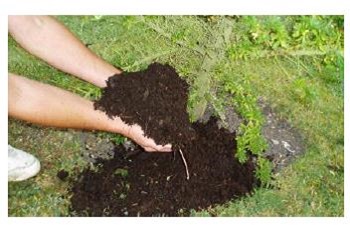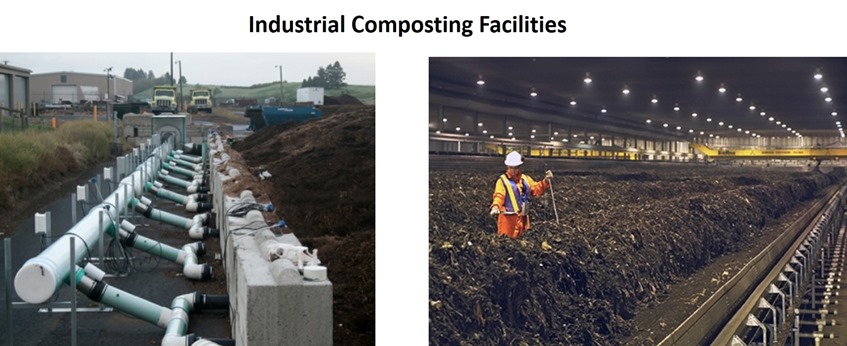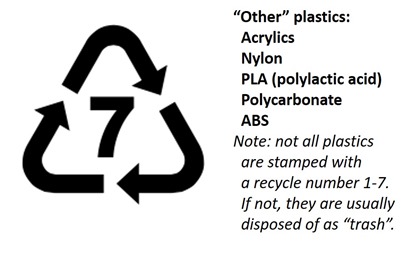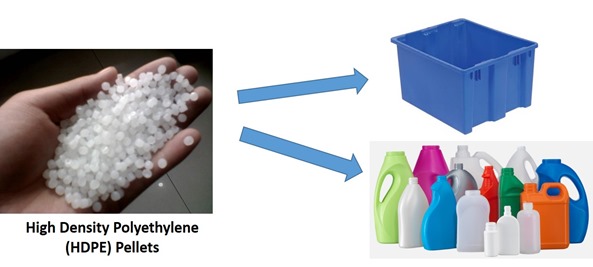Guest Post by Dr. Robert (Bob) Humphreys
 A material that is “biodegradable” will degrade partially or completely in the environment under the action of biological organisms to produce benign products such as carbon dioxide, water, simple inorganic salts, and, possibly, residual biomass. Depending on the chemical structure of the material, the biodegradation process can be rapid (e.g. human waste and household cleaning agents in a municipal water treatment facility) or very slow (a large, dead tree in the woods; ancient human, plant, and animal remains discovered in bogs).
A material that is “biodegradable” will degrade partially or completely in the environment under the action of biological organisms to produce benign products such as carbon dioxide, water, simple inorganic salts, and, possibly, residual biomass. Depending on the chemical structure of the material, the biodegradation process can be rapid (e.g. human waste and household cleaning agents in a municipal water treatment facility) or very slow (a large, dead tree in the woods; ancient human, plant, and animal remains discovered in bogs).
Polymers provide excellent examples of how biodegradation varies with chemical structure: many synthetic polymers, such as polystyrene and polyvinyl chloride, are completely resistant to biodegradation while others, such as polyvinyl alcohol, will biodegrade if conditions are appropriate. The fact that humans don’t spend their lives knee-deep in insect carcasses and dead leaves is proof that biopolymers such as carbohydrates, proteins, and nucleic acids biodegrade readily in the environment although, again, the rate of degradation will vary widely with environmental conditions (e.g. moist versus arid; cold versus warm; loosely packed versus densely packed).
The variability of polymer biodegradation with polymer structure and environmental conditions presents a difficult challenge to technologists interested in designing polymers with the robust physical properties necessary for commercial plastic applications (e.g. modern food packaging) yet with adequate biodegradability to degrade completely under conditions that can be implemented economically by municipal and commercial waste disposal facilities. For packaging applications, this means that such polymers must degrade completely in an appropriate industrial composting facility.
Composting has become a significant industry in the USA and Europe (see US composting). Nevertheless, industrial scale composting of plastics is relatively rare (e.g. Compostable Plastics 101), a function of the low penetration of compostable plastics into large-volume applications (e.g. food packaging) and the complementary fact that compostable plastics still fall into Category 7 (i.e. “Other”) in the plastic recycle stream.
Since plastic, most of it for food packaging, makes up about 11% (26.7 million tons in 2003) of municipal solid waste in the USA (Compostable Polymer Materials) and only about 9% of plastic waste is recycled, it would seem that compostable plastics offer an opportunity to relieve some of the waste burden that is shouldered mostly by municipal landfills and incinerators. However, as outlined in the previous post in this series (see https://polymerinnovationblog.com/, Dec. 12, 2016), food packaging is a complex and continuously evolving industry that must satisfy many market needs simultaneously; as history teaches us repeatedly, forcing large-scale change on such a system, such as a compostability requirement, often creates unintended consequences that can be as bad as or worse than the target problem the changes were intended to address.
So, what to do? In the spirit that accurate and verifiable information can lead to knowledge, knowledge can lead to understanding and understanding can lead to better problem solving, in next few posts, we will examine polymer composting with an eye on three issues:
- What is composting and how does it work?
- What characteristics make a polymer compostable?
- What are the significant technical challenges that must be dealt with to make polymer composting practical?
Polymers versus plastics: what’s the difference?
Up to this point, we have been using the terms “polymer” and “plastic” interchangeably. However, this is not correct technically. A polymer is composed of large or very large molecules that are assembled by linking many small molecules called “monomers” together (polymers can be made by linking together tens, hundreds, thousands, tens of thousands or even hundreds of thousands of monomers to make one polymer molecule).
Plastics contain polymers as principal ingredients, but plastics often contain a range of other ingredients that are added to modify and improve plastic properties that are important for a given market and application. Such ingredients can include dyes and pigments (to add color or absorb/scatter light), fillers (to reduce cost, to add opacity, to block light transmission, to increase hardness), UV stabilizers (to reduce negative effects of UV light), antioxidants, reinforcing agents (to add tensile or flex strength, e.g. chopped glass fibers), impact modifiers (e.g. rubber particles in high-impact polystyrene), plasticizers (to reduce brittleness, e.g. phthalate plasticizers in PVC), and flow aids and mold-release agents used in blow- and injection-molding.
Plastics also can be decorated with coatings, labels, and printing to provide consumer-relevant instructions, messages, and to make the packaging visually striking. To complicate matters further, plastics can be mixtures of polymers (called polymer blends) or can be made by laminating several layers of different polymers together to take advantage of different and useful properties offered by each polymer. Such laminates can include thin layers of aluminum foil (e.g. laminated plastic packaging such as potato chip bags).
Clearly, plastics can be much more complex than polymers and even minor components in plastics can affect the compostability of the plastic, the quality of the resulting compost and the environmental issues involved in large-scale composting. Having said that, the minimum requirement (in scientific terms, the minimum sufficient condition) for a plastic to be compostable is that the polymer is compostable. So, how does one determine if a polymer is compostable?
Test standards for compostability
As we discussed at the beginning of this post, terms such as “biodegradable” and “compostable” have fuzzy meanings unless the biodegradation or composting conditions are well defined. It should be clear that fuzzy definitions make it difficult for each stage of the supply chain, from manufacturing to consumption to end-of-life disposal, to make informed decisions about a plastic. For example, a commercial or municipal composting facility needs to know that if they accept plastic packaging for composting, the packaging will degrade completely in their facility to give benign products in a business-acceptable processing time to produce salable compost. After all, both commercial and municipal composting facilities are in the business of producing compost as their main product, so it must meet customer needs and requirements. The alternative for the composter is to reject the packaging if they are unsure it will compost appropriately in their facility.
Industry usually addresses this type of requirement by establishing a set of standards that must be met to ensure that a material or product performs as claimed. For polymer and plastic compostability in the USA, these standards are defined by ASTM D6400-04 (USA), developed by ASTM International (ASTM International) and available for purchase (see ASTM D6400-04). Standards for Europe (ISO, EN), as well as an overview of the ASTM test conditions, can be found in Compostable Polymer Materials, Chapter 6. The bottom line here is, for a polymer to be considered compostable, it must pass ASTM-6400-04 testing. California law actually requires ASTM D6400-04 testing to support claims of plastic compostability.
How composting works, characteristics that make a polymer or a plastic compostable, and challenges that must be met to make plastic composting a preferred route for plastic disposal are subjects that are best dealt with in separate posts, so we will devote the next three posts in this series to these topics.
Image Sources
2. Industrial compost facilities: Green mountain Edmonton
3. Plastic recycle number 7: Plastic 7 stamp
4. Plastic containers: High-density polyethylene pellets Blue HDPE tub HDPE bottles




Leave a Reply